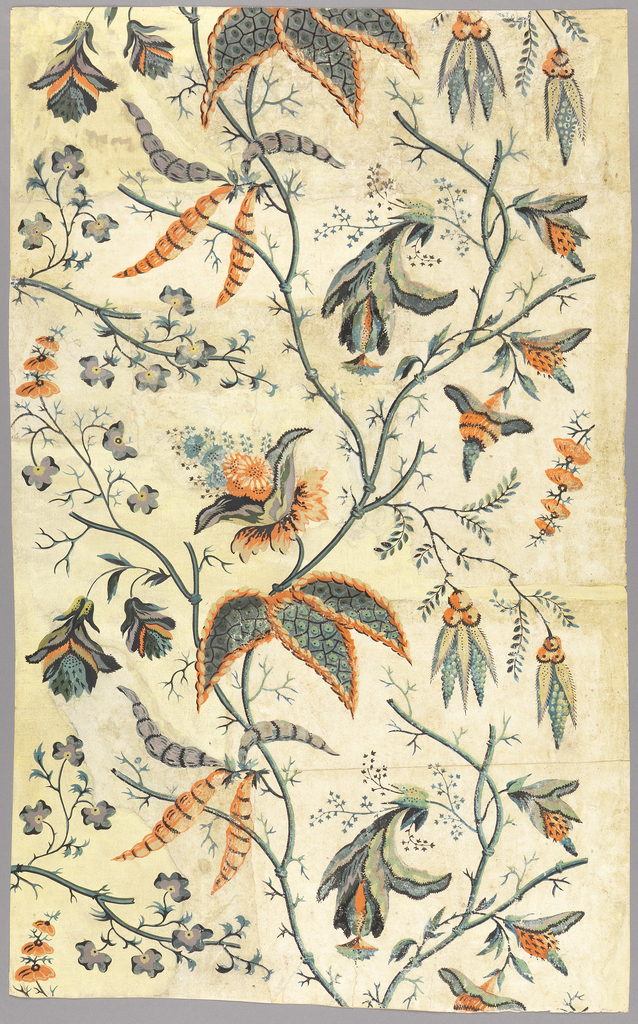People are always inquiring how the Museum acquires its wallpaper samples. Wallpapers come to the museum in a variety of ways: they can be donated by the manufacturer when produced, sometimes people find old sample books or remnants of wallpaper up in the attic or garage, and sometimes antique samples are removed from the walls of old homes. Not all papers in the Museum’s collection are pristine, with many examples having spent decades or centuries hanging on the walls of homes, not always protected from the elements. I don’t know the provenance of this piece, other than it is one of the earlier wallpapers acquired by Eleanor and Sarah Hewitt for the Cooper Union Museum. Many of the wallpapers the founders collected strong examples of a style, or produced by a premier manufacturer, but not always in the best condition. Upon first appearance the paper seems to be a semi-well preserved example of a mid-eighteenth century wallpaper in the style then referred to as India figure or chintz figures. Closer inspection shows the paper is actually an amalgamation of many smaller pieces pasted together to complete the design. Many of the pieces are fills or sections that were added and painted to copy the original to complete the design. This paper had probably been installed on the walls of a home for a couple hundred years, and didn’t want to be peeled off. When it was forcibly removed it came off in sections and was later pieced together with partial areas being recreated to complete the design. The recreated areas were quite beautifully painted to match the original. This is one of the earliest wallpapers in the Museum’s collection, with the key word being paper. There are examples of repeating designs that date earlier but those are primarily block printed and flocked on canvas.
Tombstone
Sidewall, France, 1760–65, Block-printed on handmade paper, Gift of Eleanor and Sarah Hewitt
1931-45-10
Collection Record
